Table of Contents
Are your kids bouncing off the walls? Looking for a way to burn off some energy, especially when the weather keeps you cooped up inside? You're not alone! Many parents are searching for creative solutions to keep their little ones active and entertained. That's where indoor playground activities come in.
Creative Indoor Playground Activities for Toddlers
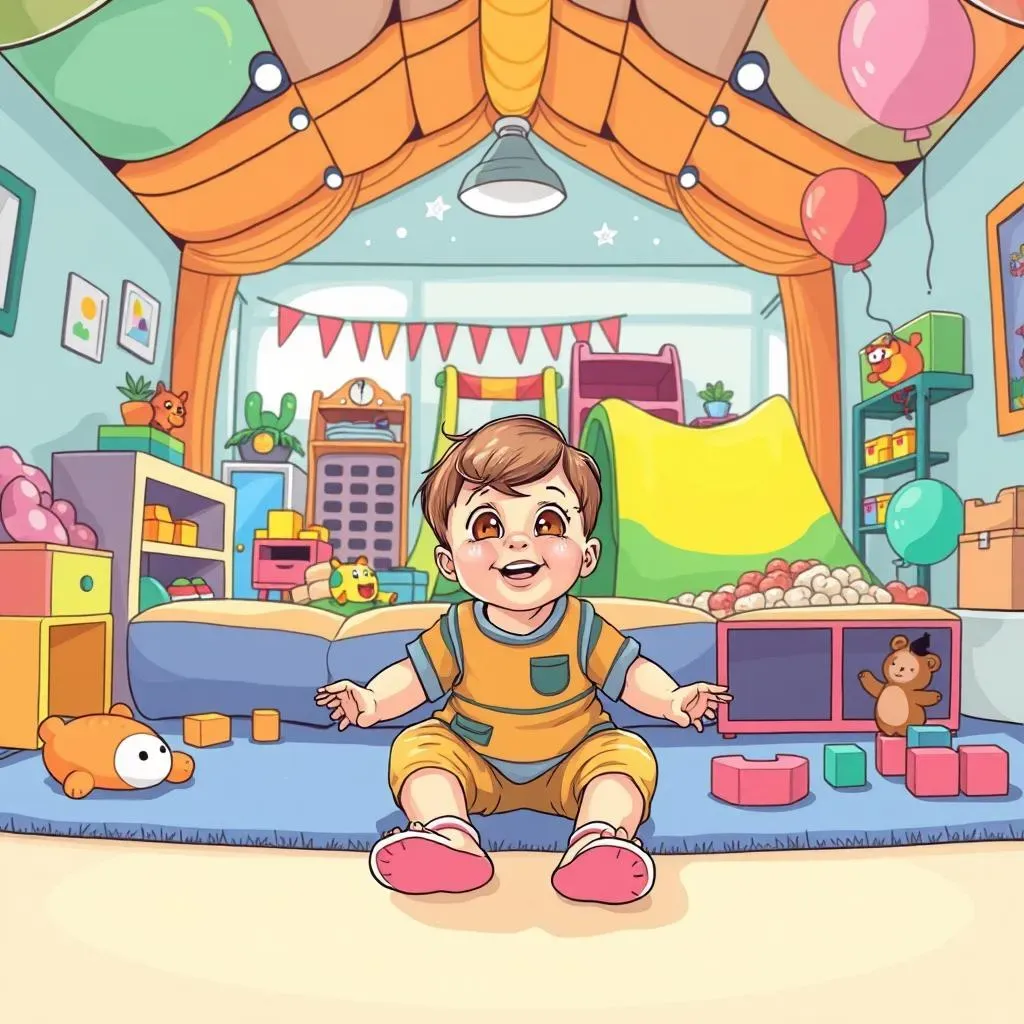
Creative Indoor Playground Activities for Toddlers
Building a Foundation of Fun
Toddlers are bundles of energy and curiosity, constantly exploring the world around them. Indoor playgrounds provide a safe and stimulating environment for them to develop essential motor skills, coordination, and social skills. But let's be honest, sometimes the pre-built structures can get a little stale. That's where creativity comes in! It's all about transforming your indoor space into a haven of engaging creative indoor playground activities for toddlers.
Think beyond the traditional slides and ball pits. We're talking about crafting experiences that spark their imagination and encourage them to learn through play. This is your chance to be the architect of their early adventures, so get ready to unleash your inner child and create something amazing.
DIY Adventures: Simple Activities, Big Impact
You don't need a massive budget or a degree in early childhood education to create engaging creative indoor playground activities for toddlers. Some of the best ideas are surprisingly simple and use materials you probably already have at home. Think pillow forts, obstacle courses made from cushions, or even a sensory bin filled with dried pasta or rice (under supervision, of course!).
The key is to focus on activities that encourage movement, exploration, and problem-solving. For example, create a "laser maze" using crepe paper streamers, challenging your toddler to navigate through without breaking the "lasers". Or set up a mini-construction zone with cardboard boxes and masking tape, allowing them to build their own structures and unleash their inner architect.
Activity | Materials | Benefits |
|---|---|---|
Pillow Fort | Pillows, blankets, chairs | Imagination, gross motor skills |
Obstacle Course | Cushions, blankets, tunnels | Coordination, problem-solving |
Sensory Bin | Bin, rice, pasta, toys | Sensory exploration, fine motor skills |
Themed Play: Igniting Imagination
Take your creative indoor playground activities for toddlers to the next level by incorporating themed play. Transform your living room into a jungle, a pirate ship, or even a spaceship! Use blankets, pillows, and household items to create the setting, and then encourage your toddler to act out the role. This not only enhances their imagination but also helps them develop language skills and social skills as they interact with you and other children.
Consider adding costumes, props, and sound effects to further immerse them in the experience. A simple cardboard box can become a rocket ship control panel, while a colander can transform into a pirate's hat. The possibilities are endless! Remember, the goal is to create a fun and engaging environment that encourages your toddler to explore, learn, and grow.
Boosting Development Through Indoor Playground Activities
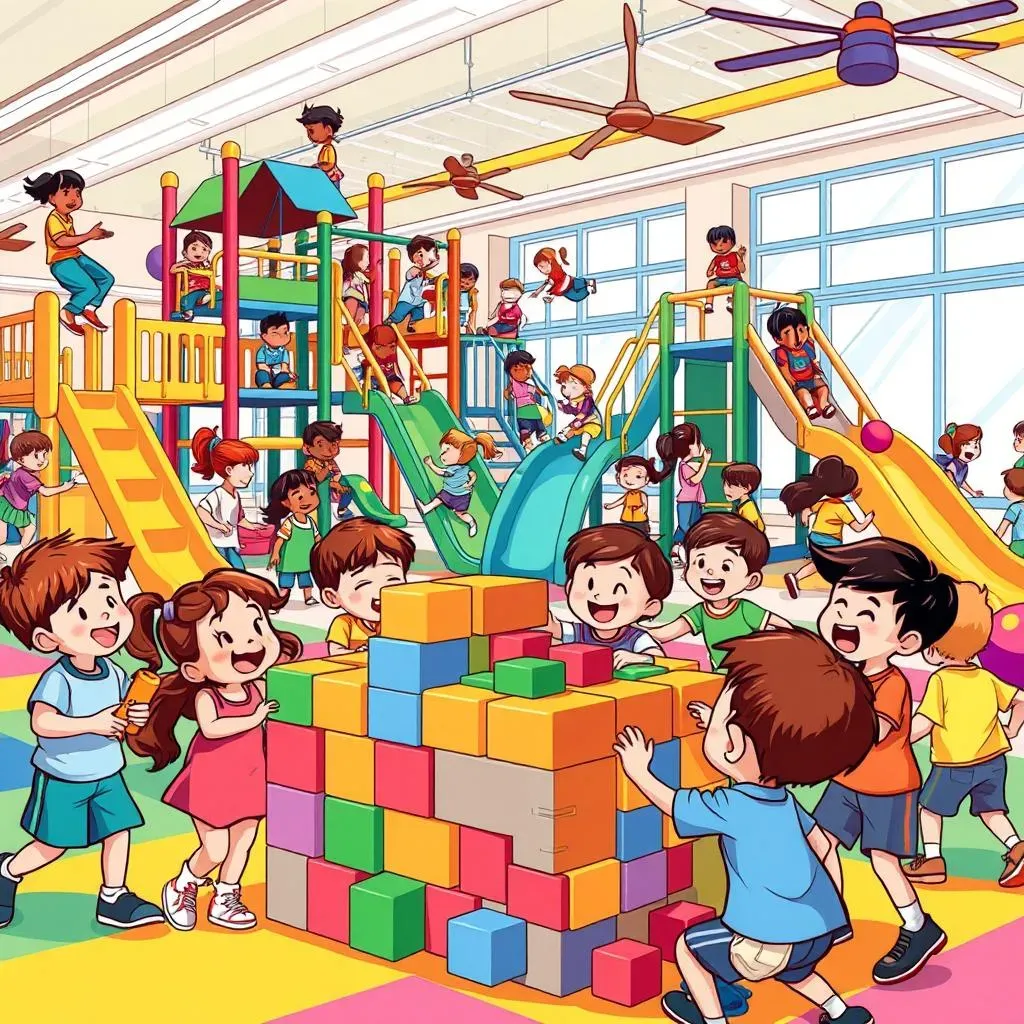
Boosting Development Through Indoor Playground Activities
Physical Prowess: Building Strength and Coordination
Let's talk about the physical benefits of boosting development through indoor playground activities. It's not just about burning energy; it's about building a strong foundation for a healthy life. Indoor playgrounds provide a diverse range of activities that challenge different muscle groups, improve coordination, and enhance gross motor skills. Climbing structures, for example, help develop upper body strength and grip, while tunnels and slides encourage spatial awareness and balance. Each jump, climb, and slide contributes to your child's physical development, setting them up for success in all areas of life.
Consider the simple act of crawling through a tunnel. It requires coordination, core strength, and spatial awareness. Or think about navigating an obstacle course, which challenges problem-solving skills and gross motor coordination. These activities aren't just fun; they're essential for developing the physical skills children need to thrive.
Cognitive Growth: Sharpening Minds Through Play
Boosting development through indoor playground activities isn't solely about physical development; it's also about cognitive growth. Indoor playgrounds offer opportunities for children to problem-solve, think creatively, and develop their cognitive skills. Activities like building blocks, puzzles, and even imaginative play scenarios all contribute to cognitive development. When kids are engaged in play, they're learning without even realizing it. They're experimenting with different ideas, testing their limits, and developing critical thinking skills that will serve them well throughout their lives.
For example, a child might encounter a problem while building a tower with blocks. They'll need to figure out how to stabilize the structure, which requires problem-solving and critical thinking. Or, during imaginative play, they might need to negotiate roles and resolve conflicts, which helps them develop social and emotional intelligence. These are valuable life skills that are fostered through play.
Social Butterflies: Nurturing Interaction and Communication
One of the most significant benefits of boosting development through indoor playground activities is the opportunity for social interaction. Indoor playgrounds provide a space for children to interact with their peers, learn to share, and develop social skills. Whether they're playing tag, building a fort together, or simply chatting with other kids, they're learning how to navigate social situations, communicate effectively, and build relationships. These skills are crucial for success in school, in their future careers, and in life in general.
Encourage your child to engage with other children at the playground. Facilitate opportunities for them to work together on projects, such as building a sandcastle or creating a play scenario. Help them learn how to resolve conflicts peacefully and communicate their needs effectively. These are invaluable social skills that will benefit them throughout their lives.
Designing Your Own Engaging Indoor Playground Activities
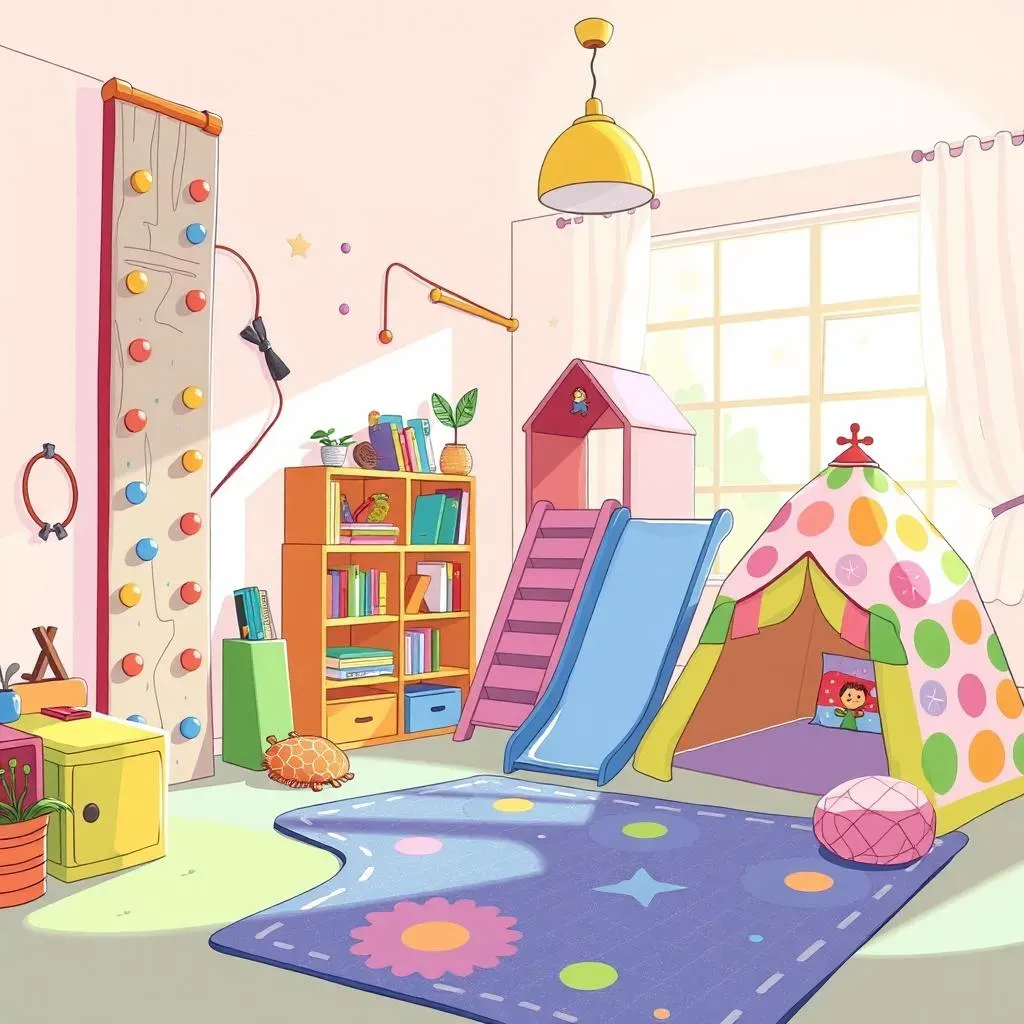
Designing Your Own Engaging Indoor Playground Activities
Space Matters: Assessing Your Area and Potential
Alright, so you're thinking about designing your own engaging indoor playground activities? Awesome! First things first, let's be real about the space you're working with. Is it a sprawling basement, a cozy playroom, or just a corner of the living room? Knowing your limitations (and opportunities!) is key. Measure your area, consider the ceiling height, and think about how you can maximize every square inch. Don't just cram stuff in there; think about flow and how kids will move through the space. A well-designed space encourages exploration and avoids those dreaded traffic jams.
Think vertical! Walls are your friends. Climbing walls (even small ones), shelves for toys, and hanging elements can add a ton of fun without eating up floor space. Also, consider the existing features of the room. Can you incorporate a window seat into a reading nook? Can you use a support beam as part of a climbing structure? Get creative and see what possibilities are already there.
Budget-Friendly Fun: DIY vs. Buying
let's talk money. Designing your own engaging indoor playground activities doesn't have to break the bank. You can go full-on DIY, scour garage sales and online marketplaces for used equipment, or invest in some key pieces from reputable brands. The best approach is usually a mix of all three. DIY projects can be incredibly rewarding and cost-effective, but sometimes it's worth splurging on a high-quality climbing structure or a durable slide. Just be sure to set a budget and stick to it. It's easy to get carried away when you start imagining all the possibilities!
When considering DIY options, think about your skill level and the tools you have available. Simple projects like building a pillow fort or creating an obstacle course with household items are easy and fun. More complex projects, like building a climbing wall, require more planning, skill, and safety precautions. If you're not comfortable with power tools or construction, it's best to stick to simpler projects or hire a professional.
Option | Pros | Cons |
|---|---|---|
DIY | Affordable, customizable, fun | Time-consuming, requires skills |
Used Equipment | Budget-friendly, sustainable | May require cleaning/repair |
New Equipment | High quality, safe, durable | More expensive |
Safety First: Padding, Supervision, and Age-Appropriateness
No matter how amazing your indoor playground is, safety always comes first when designing your own engaging indoor playground activities. Padding is your best friend. Cover hard floors with soft mats, especially under climbing structures and slides. Make sure all equipment is properly installed and maintained, and always supervise children while they're playing. And most importantly, choose activities that are age-appropriate. What's fun for a toddler might be dangerous for an infant, and vice versa. Think about the developmental stage of your child and choose activities that challenge them without putting them at risk.
Regularly inspect your indoor playground for hazards, such as loose screws, torn fabric, or broken parts. Repair or replace any damaged equipment immediately. And don't forget about ventilation! Indoor playgrounds can get stuffy quickly, so make sure the room is well-ventilated to prevent overheating and ensure fresh air circulation.
Safety First: Essential Tips for Indoor Playground Activities
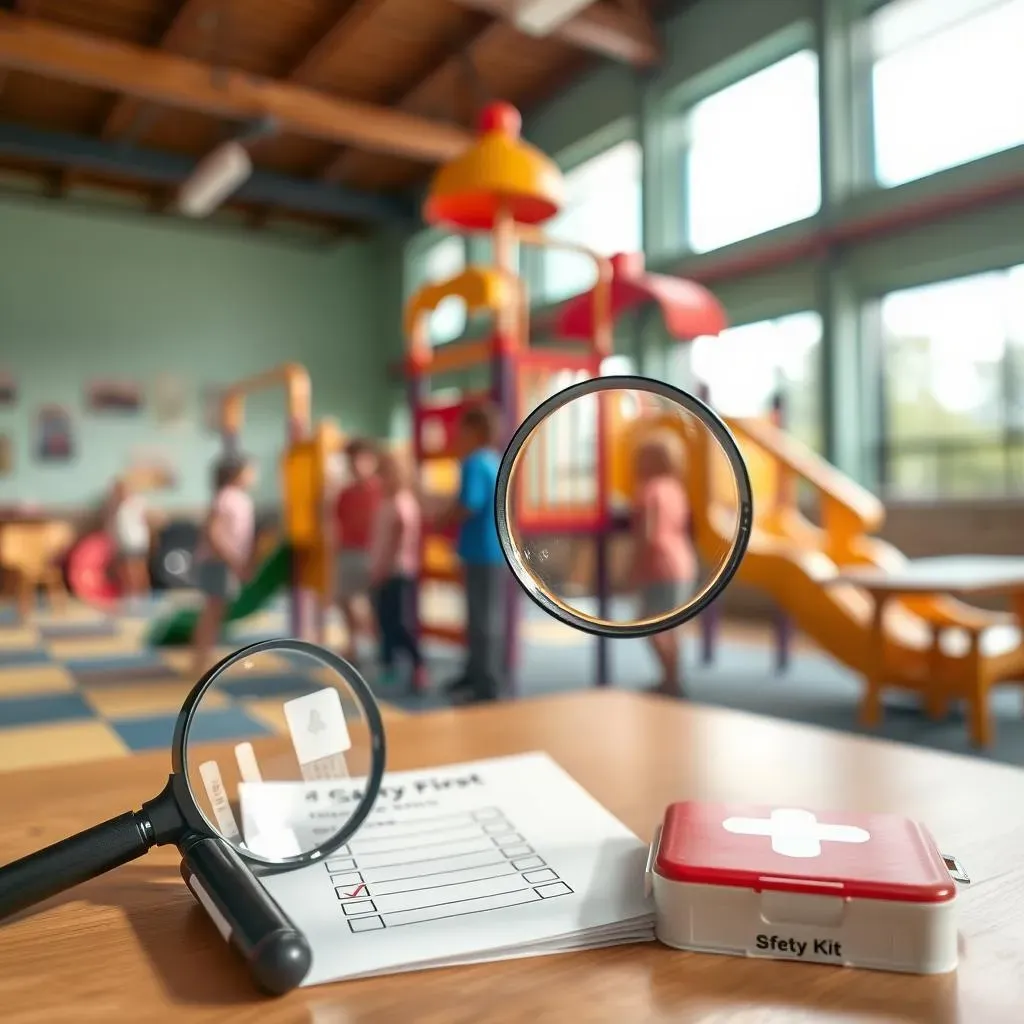
Safety First: Essential Tips for Indoor Playground Activities
Regular Inspections: Spotting Potential Hazards
let's get serious for a minute. When it comes to safety first: essential tips for indoor playground activities, regular inspections are non-negotiable. Think of yourself as a playground detective, on the lookout for any potential hazards that could cause an accident. We're talking loose screws, torn padding, broken equipment, and anything else that looks even slightly suspicious. Don't just glance around; get down on your hands and knees and really examine the space. It might seem tedious, but it's a small price to pay for peace of mind.
Make it a routine! Schedule regular inspections, whether it's weekly, bi-weekly, or monthly, depending on how often the playground is used. Keep a checklist of things to inspect, and document any repairs or replacements you make. This not only helps you stay organized but also provides a record of your safety efforts. Remember, prevention is always better than cure.
Padding Perfection: Soft Landings are Key
You know how important padding is when focusing on safety first: essential tips for indoor playground activities? Well, let's dive a little deeper. It's not enough to just slap down a few mats and call it a day. You need to think strategically about where padding is most needed and choose the right type of padding for the job. High-impact areas, like under slides and climbing structures, require thicker, more shock-absorbent padding. Corners and edges should be covered with soft bumpers to prevent bumps and bruises. And don't forget about the floor! Even a thin layer of padding can make a big difference in preventing injuries from falls.
Consider the different types of padding available. Foam tiles are a popular choice because they're affordable, easy to install, and come in a variety of colors and patterns. Rubber mats are more durable and provide better shock absorption, but they're also more expensive. Padded carpets are a good option for general play areas, but they're not as effective in high-impact zones. Choose the padding that best suits your needs and budget, and don't be afraid to mix and match different types of padding for optimal safety.
Supervision Superpowers: Always Keep Watchful Eyes
This might seem obvious, but it's worth repeating: constant supervision is crucial when discussing safety first: essential tips for indoor playground activities. No matter how safe your indoor playground is, accidents can still happen. That's why it's so important to always keep a watchful eye on children while they're playing. Don't get distracted by your phone, a book, or a conversation with another adult. Your full attention should be on the kids, making sure they're playing safely and following the rules. Be prepared to intervene if you see someone climbing too high, running too fast, or engaging in any other risky behavior.
If you're supervising a group of children, consider enlisting the help of other adults or older children. Assign specific areas of responsibility to each supervisor, and make sure everyone knows the emergency procedures. It's also a good idea to have a first-aid kit readily available in case of minor injuries. Remember, being a responsible supervisor is the best way to ensure that everyone has a safe and fun time at the indoor playground.
The Ultimate Guide to Choosing the Best Indoor Playground Activities
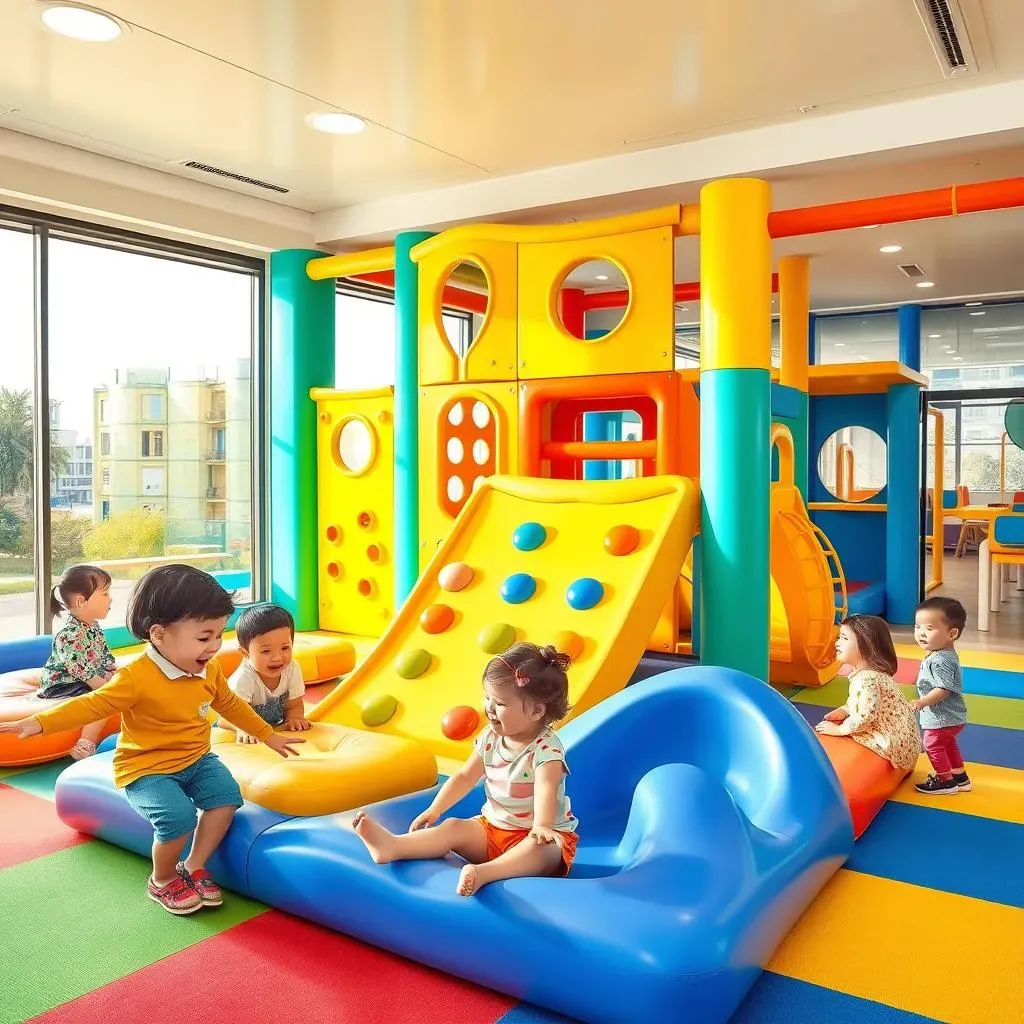
The Ultimate Guide to Choosing the Best Indoor Playground Activities
Age and Stage: Matching Activities to Development
so you're ready to dive into the world of the ultimate guide to choosing the best indoor playground activities, right? First things first, forget about what *you* think looks cool. This is all about your kiddo! The absolute most important thing to consider is their age and developmental stage. A toddler isn't going to get much out of a complex climbing structure designed for older kids, and a preschooler will quickly get bored with simple activities meant for babies. Think about their current abilities, interests, and attention span. Are they just starting to walk? Are they obsessed with climbing? Do they love imaginative play or prefer physical challenges? Tailoring the activities to their specific needs will ensure they have a blast and get the most out of the experience.
Don't be afraid to mix and match activities to cater to different age groups or developmental levels. If you have multiple children, create a space that offers something for everyone. A designated area for babies with soft mats and age-appropriate toys, a climbing structure for older kids, and a central area for group activities can keep everyone entertained and engaged.
Safety Standards: Prioritizing a Secure Play Environment
Alright, next up in the ultimate guide to choosing the best indoor playground activities is safety, safety, safety! I can't stress this enough. Before you buy anything, do your homework and make sure the equipment meets all relevant safety standards. Look for certifications from reputable organizations, and read reviews from other parents to see if they've had any safety concerns. Check for things like lead-free paint, non-toxic materials, and sturdy construction. And don't forget about weight limits! Make sure the equipment can safely support the weight of your child, and always follow the manufacturer's instructions for installation and use.
Beyond the equipment itself, think about the overall safety of the play environment. Make sure there's adequate padding under and around all play structures, and keep the area free from sharp objects, electrical cords, and other hazards. Regularly inspect the equipment for signs of wear and tear, and repair or replace any damaged parts immediately. And of course, never leave children unattended while they're playing.
Engagement and Fun Factor: Keeping Kids Entertained and Active
you've got the age-appropriateness and safety aspects covered, but now let's talk about the fun factor when you are following the ultimate guide to choosing the best indoor playground activities! After all, what's the point of having an indoor playground if your kids aren't actually playing on it? Think about what activities will keep them engaged, entertained, and active. Do they love climbing, sliding, building, or creating? Choose activities that tap into their natural interests and encourage them to explore, experiment, and use their imaginations.
Consider adding elements of challenge and variety to keep things interesting. A climbing structure with multiple routes, a slide with different levels of steepness, or a building set with a wide range of pieces can provide endless opportunities for exploration and discovery. And don't forget about the power of imaginative play! A playhouse, a dress-up box, or a set of toy vehicles can spark hours of creative fun.
Wrapping Up: The Endless Fun of Indoor Playground Activities
From boosting your toddler's motor skills to creating lasting memories with your kids, indoor playground activities offer a world of possibilities. By understanding the developmental benefits, prioritizing safety, and getting creative with your play space, you can transform any indoor area into a haven of fun and learning. So, go ahead, unleash the power of play and watch your children thrive!